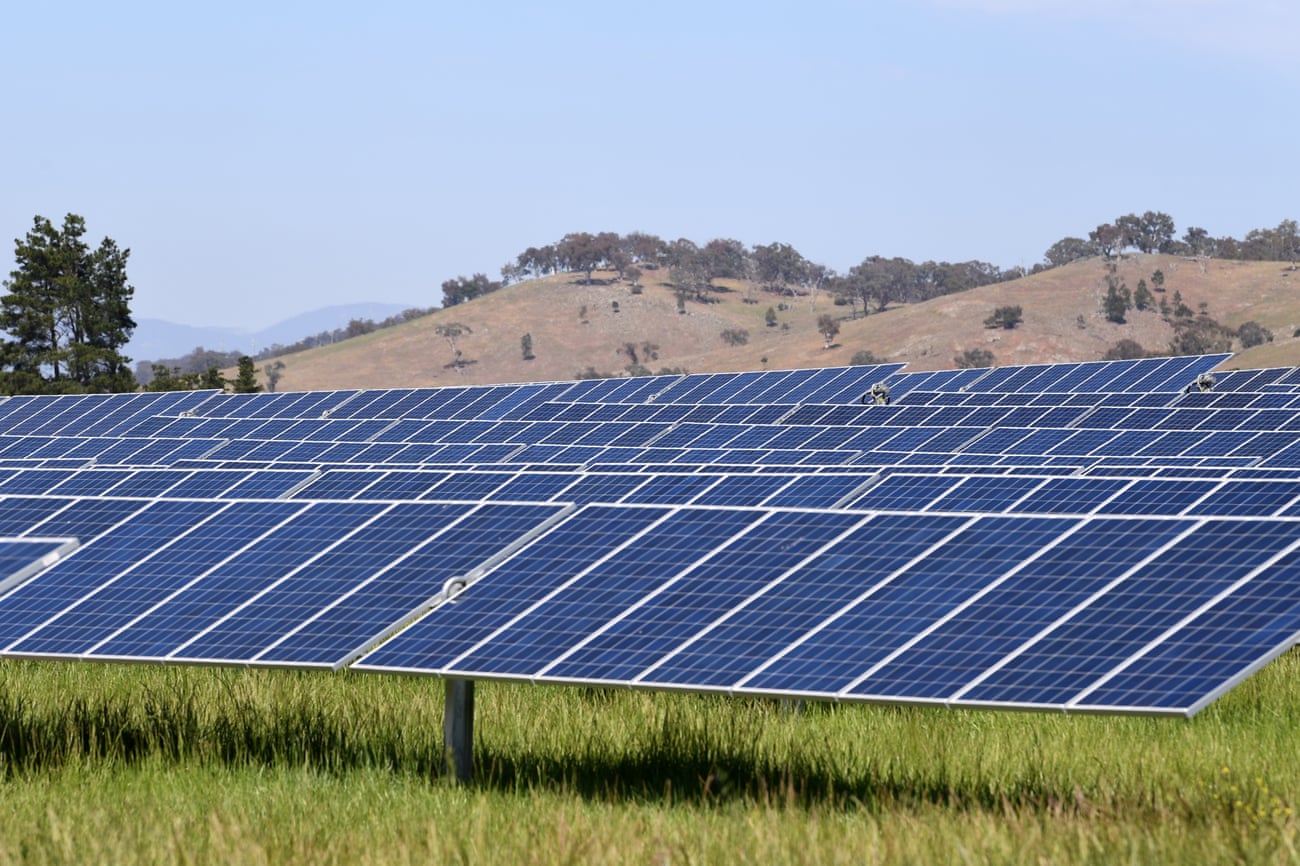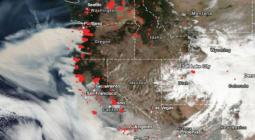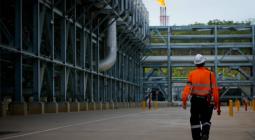The megafires and pandemic expose the lies that frustrate action on climate change.

If there was a moment of true emergency in the fight to preserve our climate, it is now
- This is part of a series of essays by Australian writers responding to the challenges of 2020
Iwas in Melbourne in late January, watching as more and more people donned face masks to protect themselves against the bushfire smoke that had thickened the air for weeks and that was causing hundreds of deaths. Turning on the news, I was surprised to see footage of crowds in China similarly masked, but for a very different reason. Hundreds were then dying in Wuhan, Hubei province, from a novel virus.
When I asked Australia’s chief medical officer about the virus that same week, I could see the concern in his eyes. But my attention was largely on the fires. They were unlike anything experienced on the continent previously, and climate scientists were beginning to piece together the link with climate change. What few knew back then was that three catastrophes would strike Australia in quick succession: the unprecedented, climate-fuelled megafires that were extinguished in February by damaging, climate-influenced floods. Then, in March, the Covid-19 pandemic that began to spread across Australia.
These three catastrophes are proof that things that travel invisibly through the great aerial ocean that is our atmosphere are a particular danger to our complex, global civilisation. The carbon dioxide molecule that accumulates imperceptibly as we burn fossil fuels causes an increase in average global temperature, which triggered the profoundly disruptive droughts, floods and fires that plagued Australia over the past year. But the coronavirus also travels unseen through the great aerial ocean, insinuating itself in lung after lung, killing person after person, until it threatens our health system, economy and society.
There are many differences between climate change and the Covid-19 pandemic but, from the perspective of prevention, there are also many similarities. Perhaps the most important is that both have “incubation periods” during which the problem grows, undetected, except by the experts. Throughout this period, things can seem relatively normal but, unless a sense of urgency leads to decisive action at this time, catastrophe becomes inevitable.
The actions required to contain both a pandemic and climate change are also broadly similar, and involve three steps. The first and most urgent is to stop the threat from growing. For Covid-19, that involved introducing social distancing, closing schools and halting entire industries. For climate change it means dramatically cutting the use of fossil fuels. The second step involves ensuring that we can save as many of the stricken as possible. For Covid-19, that meant preparing emergency wards and other treatment facilities. For climate change it means instituting measures to deal with a sweeping variety of issues, including future megafires, the threat to the Great Barrier Reef, and vulnerable coasts. The third step involves finding a permanent fix. For Covid-19, that means the development of a vaccine, while for climate change it involves removing the excess CO2 from the atmosphere.
Many Australians have been astonished at the contrast between the federal government’s responses to the pandemic and to the climate threat. It was missing in action for much of the climate-related megafire and flood crisis but in the face of a pandemic it acted swiftly. A real sense of urgency, prompted by scientific advice, was evident when Australia cancelled flights from China in February (well before most other nations had acted), and when it labelled the Covid-19 threat a global pandemic 12 days before the World Health Organization announced that it was upgrading the threat to that status. But bigger things were to come. In the middle of March, by which time the number of infections in Australia was doubling every four days, the Morrison government locked the nation down, dealing a devastating blow to the economy but saving thousands of lives.
Overall, Australia has mounted one of the most effective responses to the virus of any country. Yet on climate change it remains unalarmed and unmotivated. This may prove catastrophic, for the climate emergency is now entering a crucial phase. In Covid-19 terms, we are in mid-March – the last possible moment for emergency action. That’s because the concentration of greenhouse gases in the atmosphere is now so great that to delay even for a few more years risks triggering Earth’s tipping points. And if that happens, there will be no way back.
Researchers have identified 15 tipping points for Earth’s climate system. They involve things like the melting of glaciers and ice caps, the destruction of the Amazon’s forests and the altering of ocean currents. Trigger any of them and a cascade of consequences is unleashed that will lead to out-of-control planetary heating. Trigger the tipping points, and almost everything about Earth will change, including biodiversity, the coasts, our food and water security, and our health.

The urgency of our situation has been underlined by Australia’s most eminent climate scientist, Prof Will Steffen. In an interview with Voice of Action on 5 June, Steffen said “we are already deep into the trajectory towards collapse” of our civilisation, because nine of the 15 known global tipping points have already been activated. This is the equivalent of the nation’s chief medical officer telling the prime minister in March that he must act today if he wishes to contain the pandemic.
To date, government action on climate change has been so tardy that very soon, enough CO2 will be in the atmosphere to make it impossible to achieve the lower Paris agreement target of keeping warming below 1.5C. And, within a few years of that, there will be enough to make the higher target of 2C unobtainable. Time is now so short that we cannot wait for the next Australian election for action. It is the Morrison government that must act decisively if Australia is to do its part in averting this looming disaster. Despite the obvious impediments and appalling track record of some Coalitiongovernments, looking back on the events of early 2020 I have hope that the Morrison government can lead Australia out of danger.
Sometimes it takes a terrible disaster to alert people and Australia’s megafires may well be the moment when we as a nation awoke to how exquisitely vulnerable our country is to the effects of climate change. Historically, in a bad bushfire year about 2% of Australia’s forests will be burned. But in the summer of 2019-20, more than 21% of the country’s forests was aflame. That’s a tenfold increase and it’s the kind of step change that we’re increasingly seeing as our climate system begins to destabilise.
The link between the megafires and climate change is clear. South-eastern Australia has been getting hotter and drier for decades, and 2019 was Australia’s hottest and driest year on record, with 2018 being equally dry over south-eastern Australia and almost as hot. Fires are profoundly influenced by temperature and dryness (which is why they occur in summer rather than winter), and the long, hot, dry spell of 2018-19 set Australia’s forests up for burning. Fire chiefs had been warning of the danger for months but the prime minister had refused a meeting to discuss the growing emergency. He even went on holiday as the fires began to peak. By the time widespread flooding extinguished the fires in February 2020, 34 people had died in the flames, nearly 3,000 houses had been destroyed and entire regional economies were in tatters.
Beginning with the UK in May 2019, one nation after another has proclaimed a climate emergency. And they are acting strongly to deal with that emergency. By mid-June, the UK (the country where industrial coal-burning started) had gone two months without burning coal. But Australia has neither declared a climate emergency nor acted decisively. Despite our abundant sunlight and wind resources we are still 60% dependent on coal for our electricity needs.
There could not be a clearer case of the dangers of inaction in the face of the climate emergency than Australia’s megafires. Exactly why the federal government is not treating the climate emergency as it did the health emergency is probably known only to Morrison’s cabinet. But a few factors are evident to all.
That Australia is the world’s largest exporter of gas and coal, two of the three fossil fuels (along with oil) that are causing climate change, is clearly fundamental. Too many people, including some politicians, are doing far too well from the trade in fossil fuels to want to stymie it, regardless of the impact on the rest of us. With coal in global decline and few oil resources, gas is the healthiest sector of Australia’s fossil fuel industry, and it is the gas sector that the Morrison government is focusing on to lead the post-Covid recovery.

But if economic opportunity were the only driver of climate denialism, it could be countered by creating opportunity elsewhere, and to some extent this is happening. With enormous potential to be found in green hydrogen and the renewables sector, some bright young people are leaving the fossil fuel industry and staking their futures on the new, clean economy. What is holding back progress most strongly is the $80bn that corporations have invested in domestic gas infrastructure. Acting on the climate emergency would mean that these corporations will face huge losses. In ignoring the climate scientists and investing so heavily in gas they have made a bad economic bet but are unwilling to face the consequences.
Interwoven with self-interest, the Morrison government suffers from a thick strand of climate denialism that feeds on on tribalism and wilful ignorance. The former prime minister Malcolm Turnbull believes that the Coalition continues to struggle with climate denialism. But there has been a shift, at least in terms of rhetoric, since the megafires. It’s been a while since we heard climate lunacy from the mouth of Craig Kelly, and two of the most adamant denialists in the National party, Barnaby Joyce and Matt Canavan, are now languishing on the backbench.
I think that as the full consequences of the megafires begin to be understood, climate denialism will become more and more difficult to sustain. The economic impact of the megafires is not insignificant: estimates put the full cost between $100bn and $200bn. Because the damage is concentrated in certain regions, those communities will suffer for years as they strive to rebuild.
Finally, there are likely to be more megafires in the future. If we had not already added so much CO2 to the atmosphere, we could expect conditions as hot and dry as those of 2019 to occur around once every 400 years. But, due to the levels greenhouse gases had reached by 2013, that probability has increased to once every eight years.
Will the Morrison government act in time? There is one important difference between the pandemic and the climate emergency that may hinder prompt climate action. Pandemics grow quickly: one week there might only be a scatter of cases, but within a fortnight, without strong action, there could be thousands. By comparison, the climate emergency is slow-moving. The fate of Turnbull warns that those struggling against self-interest and climate denialism have a difficult job ahead of them.
One cause for optimism, however, lies in the fact that the megafires and the pandemic have exposed some of the lies told to frustrate action on climate change. That it would be “economy wrecking” to take action in the face of the climate emergency is one. Australian electors now understand that their government can do extraordinary things to protect them.
One thing we could all do right now to help is to challenge the denialists. Before the Covid restrictions, hundreds of people attended a meeting in Sydney’s Sutherland shire aimed at ousting their local member, Craig Kelly, in order to replace him with a representative who understands the need for climate action. And at the 2019 election, denialist-in-chief Tony Abbott was defeated by an independent, Zali Steggall. Were the denialists visibly challenged everywhere, their grasp of power within the Coalition would slip even before the next election.
Tragically, the news from the climate scientists is getting worse and worse. Increasingly, many experts are viewing 2021, and specifically the UN climate change conference to be held in Glasgow late that year, as humanity’s last chance to avoid an environmental apocalypse. If there was a moment of true emergency in the fight to preserve our climate, it is now.
• This essay will be part of the anthology Fire, Flood and Plague, edited by Sophie Cunningham and published by Penguin Random House in December
16 September 2020
The Guardian








